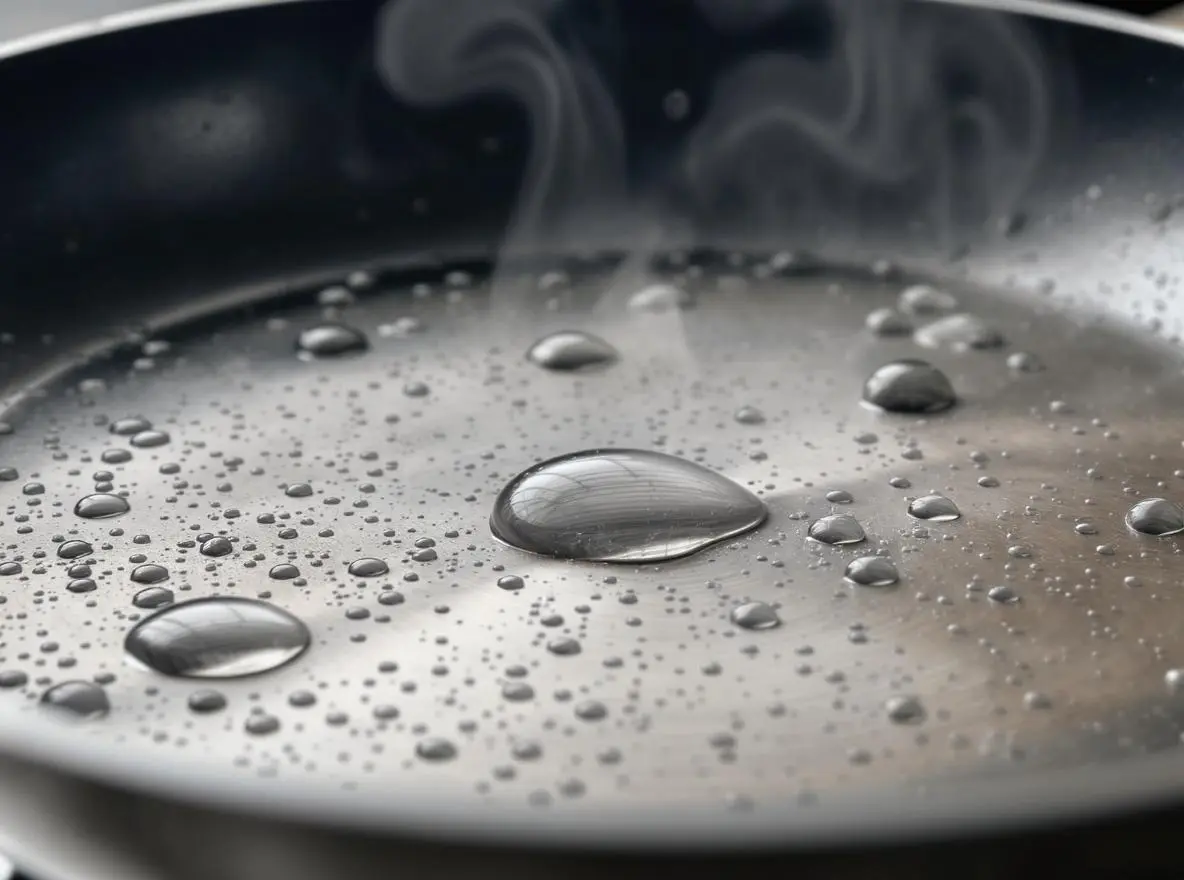There’s a common misconception that has scared generations of home cooks: "stainless steel sticks." We’ve all been there—you put a piece of chicken or an egg in a gleaming pan, and it instantly bonds to the surface, resulting in a torn filet and a frustrating cleanup.
The truth? The pan isn't the problem; our approach to heat is. Stainless steel is not like a traditional non-stick pan; it’s a high-performance machine that rewards a little bit of science with incredible results. In this guide, we'll teach you the single most important skill for mastering your stainless steel cookware: heat management.
The Physics of "Sticking" (and How to Prevent It)
Food sticks to a pan for one primary reason: a chemical bond forms between the food (specifically proteins) and the metal. This happens most aggressively when the pan is either too cold or too hot.
The goal is to hit the "sweet spot." This is where a phenomenon known as the Leidenfrost Effect comes into play. When a water droplet hits a pan that's at the perfect temperature (hot, but not scorching), it doesn't just hiss and evaporateit dances across the surface on a cushion of its own vapor.
This vapor cushion is your magic layer. It prevents the food from making direct, molecular contact with the pan, creating a temporary, natural non-stick barrier.

The Pro Technique: A Step-by-Step Guide
Ready to unlock flawless cooking? Follow these simple steps.
1. The Pre-Heat is Everything (Don't Rush It)
This is the most critical step. Place your empty, dry Nomer Life pan on the stove over low to medium heat. A high-quality 3-ply pan is incredibly efficient at retaining heat, so you rarely need to go above medium. Let it heat up for 2-3 minutes.
2. Do the Water Droplet Test
Forget guessing. Flick a tiny drop of water into the pan.
- If it hisses, sputters, and evaporates: It's not hot enough. Wait another minute.
- If it shatters into many tiny, skittering drops: It's too hot! Remove it from the heat, let it cool for a minute, and test again.
- If it forms a single, gliding bead (or a few) that dances around like mercury: Perfect! You’ve nailed it.
3. Now (and Only Now) Add Your Oil
Add your cooking oil. It should shimmer almost immediately. Swirl it to coat the bottom of the pan. The hot oil fills in any microscopic pores in the metal, creating a second layer of non-stick protection.
4. Add Your Food
Place your food (pat-dried, as excess moisture will cause spattering) into the pan. You should hear a confident, consistent sizzle.
5. The Golden Rule: Don't Touch It!
This is where patience pays off. If you’re searing a steak or chicken breast, it will stick at first as the proteins begin to cook. Let it be. As the Maillard reaction (browning) occurs, the food will develop a crust. Once that crust is formed, the food will release itself from the pan, signaling it's ready to be flipped.
What About My Textured Non-Stick Pan?
The amazing part about using a modern pan, like those with the Nomer Life Micro-Dot surface, is that this technology amplifies these results. The textured "peaks" reduce surface contact, and the pre-heating process creates that perfect oil barrier in the "valleys," giving you an even more forgiving and effective non-stick experience, all without chemicals.
A New Relationship With Your Cookware
Mastering stainless steel isn't about learning a difficult skill; it's about un-learning one bad habit: impatience. By respecting the simple physics of heat, you transform your cookware from a potential source of frustration into your most powerful, precise, and reliable kitchen tool. It's the secret to unlocking true, professional-level results at home.
(Shop the full Ultra Cook™ collection and start mastering heat today.)